Last Updated on February 28, 2025
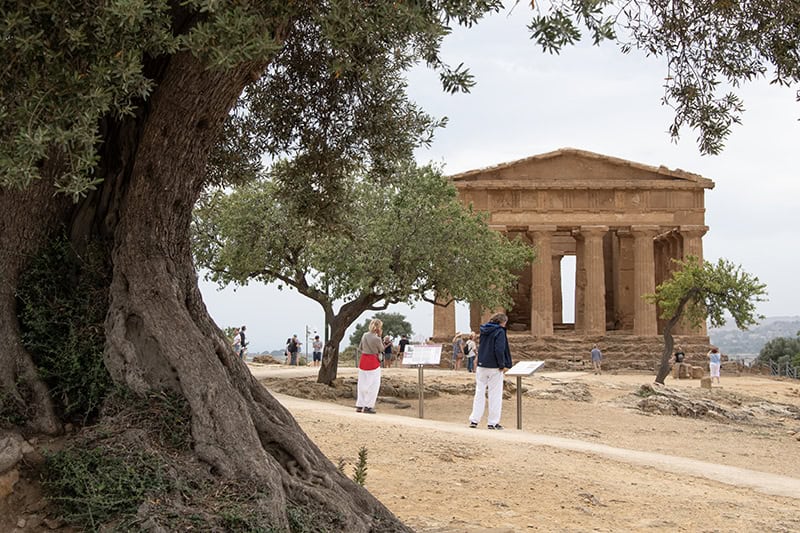
My first trip to Sicily wasn’t to Agrigento but was a quick ferry ride from San Giovanni terminal in Reggio Calabria to Taormina. I was with a Mussolini-loving cousin who insisted we take the next ferry back so we wouldn’t miss pranzo (lunch) – the Calabrese have their priorities!
I’ve taken many trips to Sicily since, but none have mimicked that one. And to be truthful, I’ve lost count since quite possibly Sicily is my favorite region in Italy. And, no, my roots are not Sicilian.
Fast forward to a honeymoon and, most recently, a book launch in the province of Messina. But rarely do I step foot in Sicily without revisiting Agrigento because it bears special temptations – majestic, spiritual, and mystical.
This is the land of Demeter (Goddess of Harvest) and her daughter, Persephone (Goddess of Agriculture) not to mention Venera (Goddess of Love, Beauty, and Fertility) where Erice’s castle was built over her temple. The mother-daughter goddesses were worshiped with fervor on the west side of Agrigento’s archeological park. From the dark winter months, the goddesses promised to bring spring, which arrives early in Sicily.
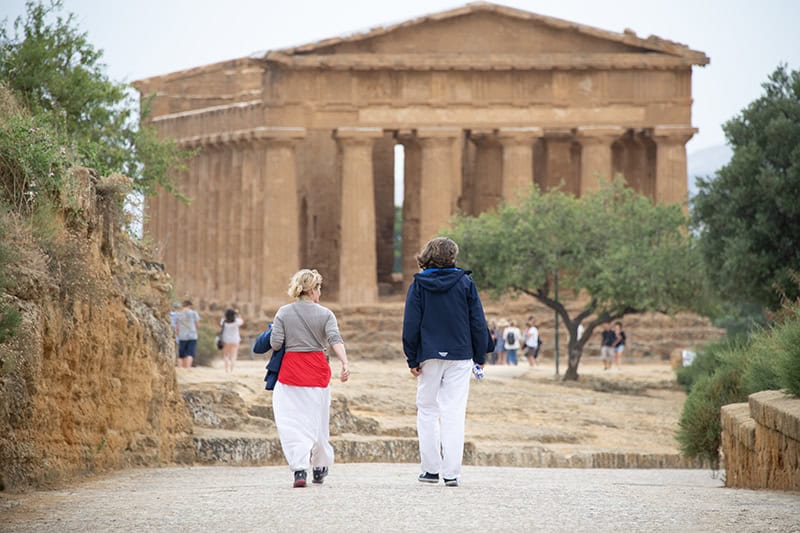
A Hot Spot for 2025
Recently Airbnb named Palermo, the capital of Sicily, one of the hottest spots for 2025. As Rome will be hosting Holy Year, this might be the best time to visit Sicily and, in particular, Agrigento.
Everyone who was anyone on the ancient theater circuit has already visited Sicily. The Phoenicians, Greeks, Byzantines, Arabs, Normans, Aragones, Angevinins, the House of Savoy, Austrians and Bourbons, have all left their marks. Throughout Sicily, in addition to their phrases, you’ll also find their recipes (including biscotti, marzipan, couscous, and more). There are also grapes and the lightweight carob pods that grow on trees not far from the twisted olive trees at the foot of the temples.
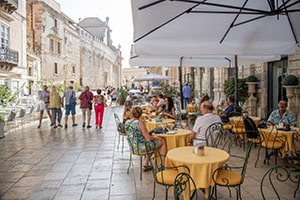
Not unlike their potential Greek conquerors, Sicilians are quite proud of who they are. They have preserved their culture and various dialects, which they fought hard to keep. This is the reason they did not become “Hellenized,” but remained unabashedly Sicilian.
On a bright February afternoon on the nearly two-hour drive from Palermo’s Falcone- Borsellino Airport to Agrigento, Mt. Etna’s snowy peak remained visible as if it was Sicily’s compass. Agrigento is on a ridge whose parameters are terraces with ancient olive trees and those unmistakable Greek temples. It’s best known for its Valle dei Templi (Valley of Temples).
The Valle dei Templi is such a world-renown cultural icon that PBS television recently aired a concert there by an acclaimed Italian trio, a performance evocative of the Three Tenors. You can see more at Il Volo in the Valley of the Temples.
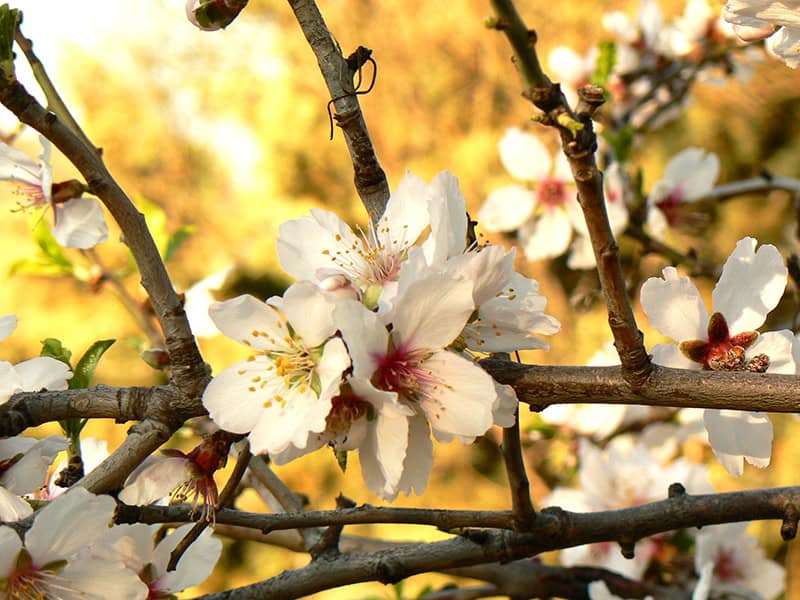
Wonderful Foods and Wines
This year the first Saturday in March (March 8-16) inaugurates the annual Sagra del Mandorlo in Fiore, the Almond Festival celebrated at the same time as the International Folklore Festival. During a recent year, a food festival highlighted Agrigento’s second most valuable asset, its food crops. They range from fish to oranges to grapes, almonds, pistachios, olives and olive oils. Sicily is also Nero d’Avola and Cerasuolo di Vittoria wine country. In fact, it is the third largest producer of wines right behind the Veneto and Emilia Romagna.
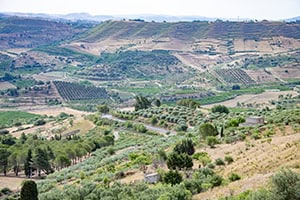
Travelers headed to Italy will also find Agrigento, Sicily has been crowned the Italian Culture Capital for 2025. As expected, events will pack the calendar. Since such occasions are times for a city to fund various cultural projects and institutions, Agrigento has put its proverbial best cultural foot forward. Exhibits, performances, concerts dot the calendar from pre-Lent carnevale or carnivals in late Feburary and early March. On the second Sunday in July the festivals spread to just about every town across the island until the Feast of San Calogero and the Ellenic Music Festival, also in July, that takes place in the Valley of the Temples.
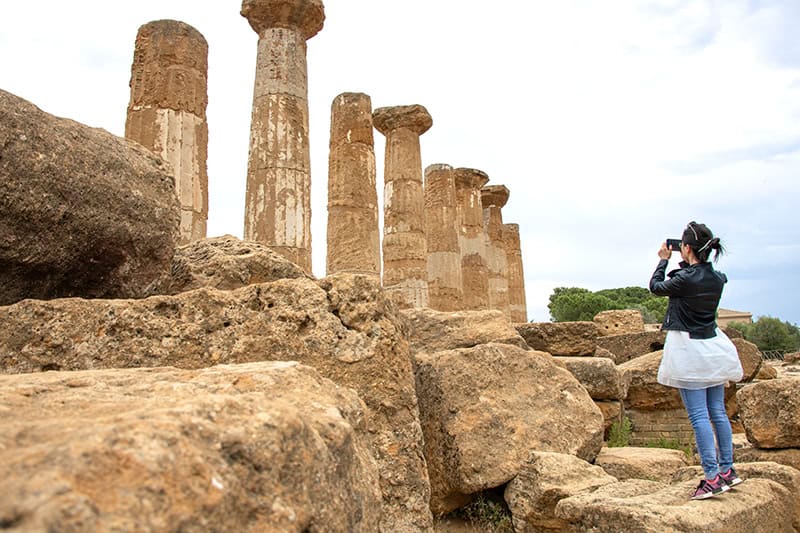
Agrigento’s Valle dei Templi
Agrigento was founded as a Greek colony in 6 B.C. when it was called Akragas. Its Valle dei Templi is home to five ancient temples: Concordia, Juno, Castor and Pollux, Jupiter, and Hercules, all set on a plateau overlooking the sea.
Agrigento has been a UNESCO World Heritage site since1997 and is listed in countless travel brochures. Yet it is usually only a stop between other places, but hardly ever an overnight leaving it as one of Sicily’s most famous travel icons but so underappreciated.
Here old crafts such as cart-making still survive, as does the Santo Spirito Monastery in Agrigento proper. One of the most famous medieval buildings in Agrigento, it still shelters cloistered nuns making sweets as they always have. Set on top of the Via Atena, it’s possible to visit their small, beautiful museum while the bells toll.
In addition to its magnificent ancient temples, Agrigento also has other stars. They include the nearby Sicani Mountains, the Torre Salsa Nature Reserve, and the Scala dei Turchi. And, of course, there’s the heart of the city itself.
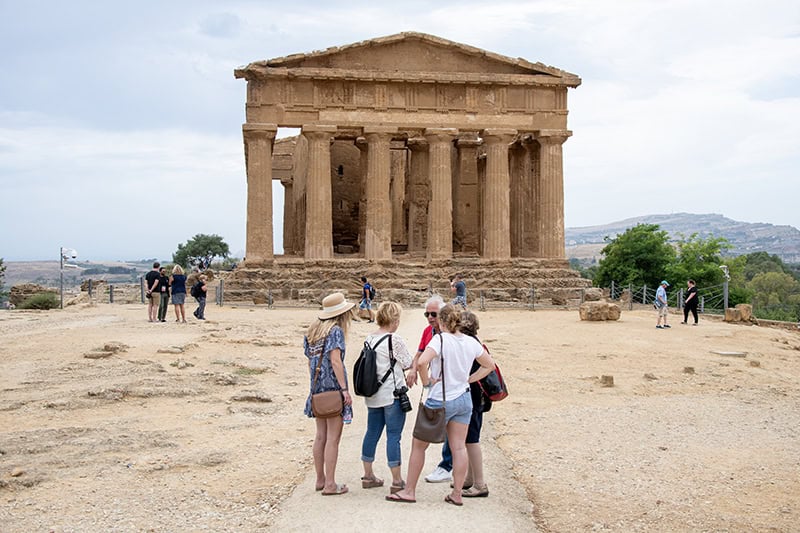
Be Sure To Hire a Guide
Since the temples in Sicily are Agrigento’s marquee attraction, I recommend you hire a guide for the walk through the valley. It will certainly enhance your visit. And inside the city, a guide will also show you often overlooked gems, some hosting special events this year.
A good example is the Pietro Griffo Archaeological Museum, with more than 5,000 artifacts. Often overlooked, it is a vital key to understanding the vast importance of the temples. Named for an archeologist and overseer of the archeological park, you’ll find it in the center of the city. Part of it is annexed to the adjacent church of San Nicola that dates to the 14th century. Other sites in town include the Santa Maria dei Greci Church (13th century) which stands on the remains of a pagan temple.
Also visit the Luigi Pirandello Theater, which predictably stages its productions in Italian. To give you an idea of Pirandello’s status, in the theater’s foyer you’ll find two busts: one of Zeus, the other Pirandello.
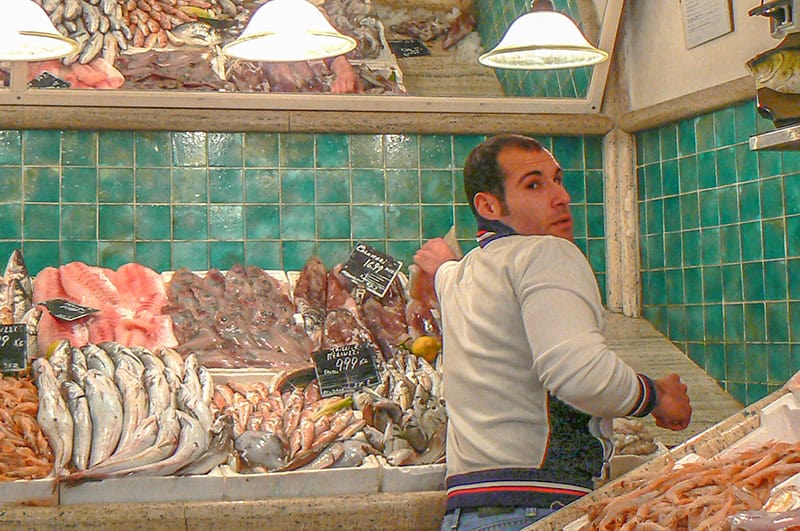
More Delicious Food and Wine
Centuries of volcanic eruptions have endowed Sicily with incredibly fertile soil. Farmers, vintners and fisheries are building on the foundations of an old one – biologica or organic farming and fishing. Picture smoked swordfish, grouper and tuna from the Mediterranean; the Biondi di Sicilia, Sicilian blondes, a particularly sweet and large orange; or the organic vineyards of the Bagliesi Estate in Naro (www.bagliesi.it) now featuring acclaimed wines including Cammut Nero D’Avola, Cammut Nero D’Avola Barriccato, Cammut Syrah, Nero Saraceno, Cammut Cabernet, Sauvignon, Cammut Merlot, Margaret Chardonnay, among others.
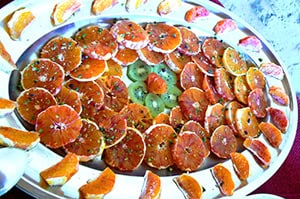
When last visited, the almond festival coincided with a food festival that showed off Agrigento’s second most valuable asset, its food crops. From fish (fresh and smoked) to oranges to carob, grapes, almonds, pistachios, pomegranates, olives and olive oils – making Sicily the third largest producer of wines right behind the Veneto and Emilia Romagna. This is Nero d’Avola and Cerasuolo di Vittoria country although a number of varietals are now being experimented with.
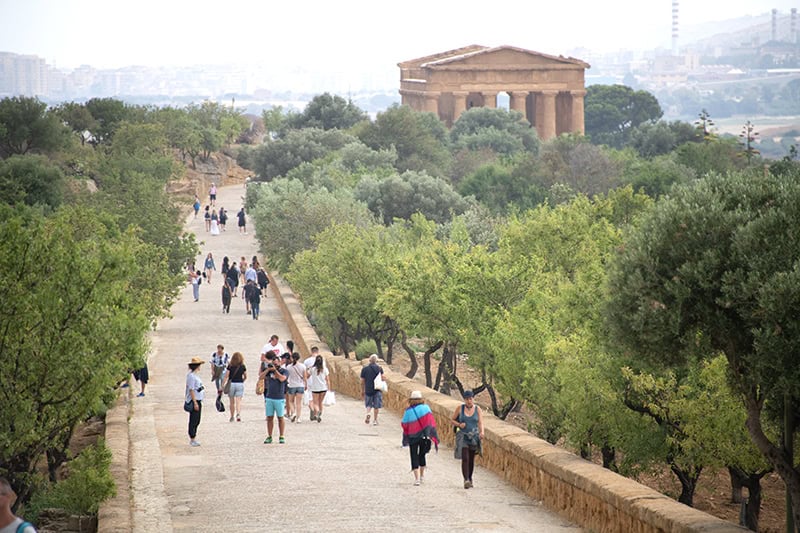
The Walk Into Town

On one’s walk into town from various hotels – most constructed to get the best views of the Valley of the Temples – visitors enter various piazzettas, small piazzas.
As in other areas of Italy, most are lined with the wizened old townsmen in their coppolas, flat caps now being discovered by American designers. They barely raise their eyes as you pass, yet instinctively you know you’ve been noticed.
The men aren’t the only ones visitors see since there are also new arrivals from North Africa. They are immigrants from Senegal to Tunisia to Morocco – seeking their futures on the largest and most promising island in the Mediterranean.
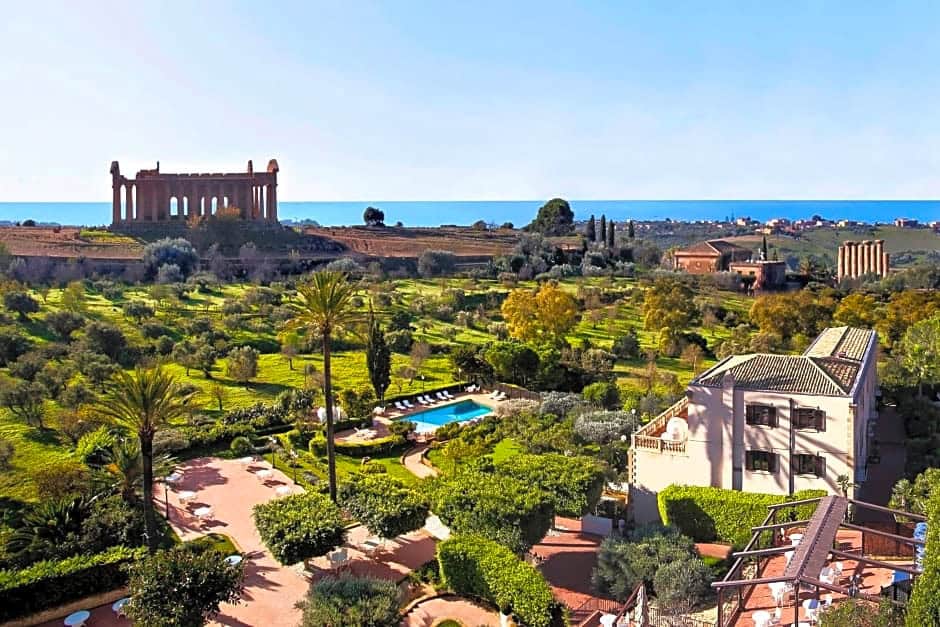
Lodging in Sicily
Agrigento’s luxury hotel inventory ranges from the in-town five-star Hotel Villa Athena , to the four-star Colleverde Park Hotel. There is also the country inn of Hotel Baglio della Luna, restored by a local antiques dealer.
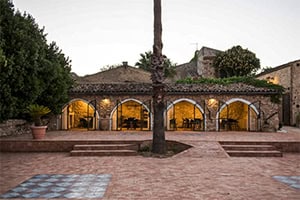
There are also simpler properties such as the three-star Hotel Miravalle in Ribera (home of those fabulous oranges). The Villa Sikania Park Hotel about 10 miles west of Agrigento in Sikuliana, provides ample parking and an amazing pool.
You’ll see the latest agritourism ventures in the countryside on former family estates such as the Baglio Laura in Licata and the 18th century farmhouse now the Baglio San Nicola. More lavish resorts include the Hotels Demetra Resort and the Hotel Dioscuri Bay Palace. The Baia di Ulisse near the beach features a wellness center and spa.
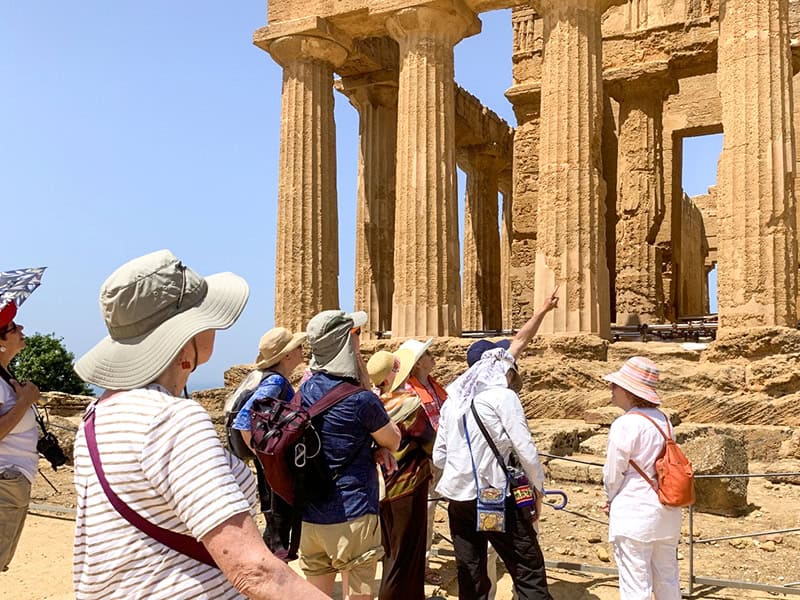
Recommended Ways to Experience Sicily
The Greeks fought hard to keep this heavenly colony of Agrigento, one of the richest and most famous within the Magna Graecia. One visit will reveal just why and I promise you will return.
I highly recommend you book three nights in Agrigento to fully appreciate its most famous and its most modest sites. For those who prefer to travel in small groups, an ideal way to visit is to book a few days with a specialist company such as the highly regarded, New York-based LaRosaWorks. Owner Karen La Rosa can customize your stay with a guide and transportation not to mention inside info when it comes to food and wine. Says La Rosa: “The immensity and majesty of the Valley of the temples is bookended by the lovely small visits in the area to farms and homes, to places where you can learn about foods, traditions and crafts. Interestingly, I feel a lot of entrepreneurial spirit and energy there.” You may also enjoy La Rosa’s “Guide to Sampling Wines and Wineries in Sicily.”
Allison Scola, owner of the boutique company Experience Sicily explains her own attraction to Agrigento: “…my own devotion to these two goddesses and their teachings of life-death-darkness-and the power of the shadows and the promise that spring will come. This is the powerful stuff that I confront in Agrigento!”
Affinity groups are not new to travel, and Arba Sicula, a not-for-profit organization that helps to preserve the culture and the dialects is based in Long Island, NY, schedules a single departure each year. Headed by former Professor Gaetano Cipolla, it is a broad-based trip, covering parts of the island with expert guides and decent hotels. He does require membership in order to join the tours.
One of the latest initiatives is Val di Kam, a startup company that has developed “village experience” tourism: guided trips to very small villages in Sicily and in particular, the Sicani area.
If You Go:
Italian Tourist Board
686 Park Avenue
New York, New York 10065
Tel: (212)245-5618
www.italiantourism.com
Most carriers that fly from the U.S. to Europe operate service to Rome and Milan with connecting flights to Sicily. You may also opt for one of the following for seasonal non-stop service:
NEOS Airlines
(877) 865-2868
(212) 557-1645
https://us.neosair.com
From New York’s JFK, NEOS operates two weekly non-stop flights to Palermo, Sicily and four weekly flights to Milan. Starting June 3rd through October 15, it will operate one weekly flight to Bari, Puglia on Italy’s eastern coast.
There are also non-stops from NY to Catania on Delta and from Newark to Palermo on United — both offered ‘in season.’
Ita Airways (formerly Alitalia)
Tel: 877-793-1717
https://www.ita-airways.com/en_en
The carrier operates non-stop flights from San Francisco, Los Angeles, Washington DC, New York, Miami, and Boston to Rome’s Fiumicino and Milan’s Malpensa Airports.

Leave a Reply